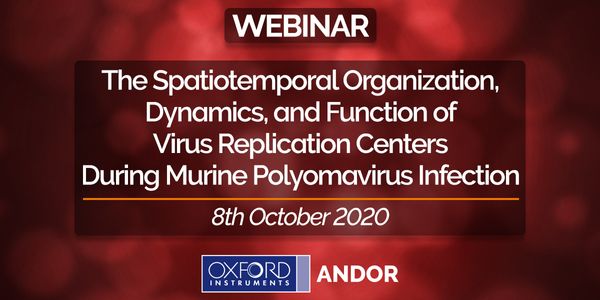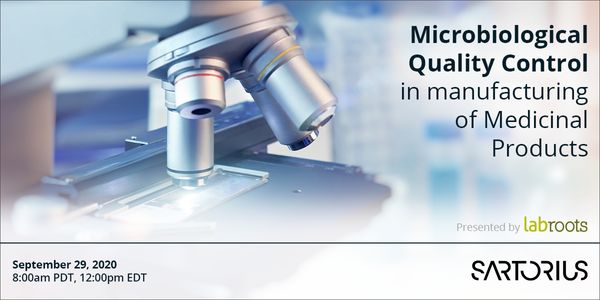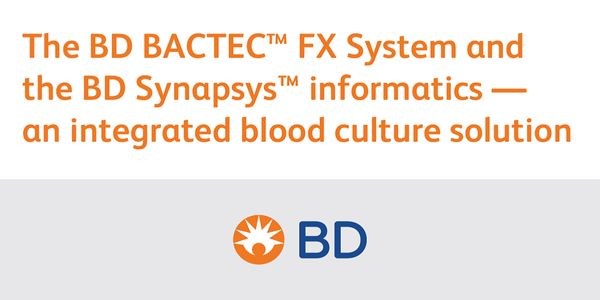Environmental Microbiology
Environmental microbiology is the study of the composition and physiology of microbial communities in the environment. The environment in this case means the soil, water, air and sediments covering the planet and can also include the animals and plants that inhabit these areas. Environmental microbiology also includes the study of microorganisms that exist in artificial environments such as bioreactors.
-
OCT 08, 2020 | 9:00 AMDate: October 8, 2020 Time: 9:00am (PTD), 12:00pm (EDT), 5:00pm (GMT) Small DNA viruses require both host DNA replication and repair factors for their replication. The host cell replication...OCT 08, 2020 | 12:00 AMCancer disparities among persons of African descent are driven by both biological and nonbiological factors. There is evidence in breast cancer that psychosocial factors (environment, socioe...Speaker: K. Sean Kimbro, PhDSEP 29, 2020 | 8:00 AMDATE: September 29, 2020 TIME: 8:00 am PDT There is a steady increase in FDA 483s related to microbiology. Though most are for sterile products, non-sterile and terminally sterilized product...SEP 23, 2020 | 10:00 AMDATE: September 23, 2020 TIME: 10:00am PT, 1:00pm ET Diagnostics, particularly blood cultures, play a key role in sepsis diagnosis. Best practices are well-known for collection, transport, a...SEP 10, 2020 | 3:00 PMWhile global demand for food is expected to increase significantly (70% by 2050), the agricultural industry is suffering from a decline in soil fertility, the adverse effects of climate chan...Speaker: Brajesh SinghSEP 10, 2020 | 2:00 PMWhile live cell imaging offers advantages over traditional static imaging, this approach has been challenging for studying microbes due to the difficulty in tracking very small cells in a si...Speaker: Cindy Chen, PhDSEP 10, 2020 | 1:00 PMIn Pacific Northwest watersheds several species of Pacific salmonid fishes are hosts for the rhabdovirus infectious hematopoietic necrosis virus (IHNV). In this multi-host ecosystem speciali...SEP 10, 2020 | 12:00 PMIn this webinar, we will present QIAGEN CLC Genomics Workbench and its utility for bacterial isolate identification, strain discrimination using core genome multi-locus typing (cgMLST) and d...Speaker: Jonathan Jacobs, PhDSEP 10, 2020 | 11:00 AMLearning Objectives: 1. Understand the challenges of extracting DNA from human samples for microbiome analysis, and learn about the best technologies for accomplishing this 2. Learn about pr...Speaker: Dominic O'Neil, MS, MBASEP 10, 2020 | 10:00 AMEnigmatic and often vilified, viruses are now known to play important and possibly indispensable roles in the biology and ecology of cellular organisms. Evidence of viral impacts are everywh...SEP 10, 2020 | 9:00 AMDate: September 10, 2020 Time: 9:00am (PDT), 12:00pm (EDT) Osmolality testing is relevant throughout the entire bioprocessing workflow. As customers look to refine mAb and gene therapy workf...SEP 10, 2020 | 9:00 AMCongenital CMV is the most frequent infectious cause of neonatal malformation in developed nations. It is more prevalent than other neonatal conditions such as spina bifida and Down syndrome...Speaker: William Rawlinson, PhDSEP 10, 2020 | 7:30 AMThe selective pressure placed on the resident microbiota by local changes in the host environment – DNA damage, chronic inflammation, metabolic shifts, barrier damage, reduced immunosu...Speaker: K. Leigh Greathouse, PhD, MPH, MS, RDPresented at: Microbiology Week Virtual Event Series 2020
SEP 10, 2020 | 6:00 AMCoronavirus disease 2019 (COVID-19), caused by SARS-CoV-2, is spreading rapidly across the world and was announced as a “global pandemic” by the World Health Organization (WHO) o...Speaker: Quan Wang, PhD , Renhong Yan, PhDSEP 10, 2020 | 12:00 AMThe microbiome has emerged as a major contributor to human health and disease. Numerous sources implicate shifts in the gut microbiome as potentially pathologic for a variety of autoimmune d...SEP 10, 2020 | 12:00 AMFocusing on the urgent clinical problem of increasing carbapenem resistance in Enterobacteriaceae we have been evaluating detection methods in clinical microbiology and molecular transmissio...SEP 10, 2020 | 12:00 AMMicrobial biofilms form on all aquatic surfaces and can harbor pathogenic bacteria. In the aquaculture industry, Flavobacteria species can cause serious diseases and lead to high mortality....SEP 10, 2020 | 12:00 AMSepsis is a life-threatening condition that is caused by the immune system’s inability to respond appropriately to an infection. How sepsis can change the gut microbiome in ways that a...SEP 10, 2020 | 12:00 AMThe host response to infection is a critical determinant of virus pathogenicity. Emerging viruses require the host cellular machinery to replicate and successfully infect new hosts, and must...SEP 10, 2020 | 12:00 AMThe transfer of antimicrobial resistance genes (ARG) to pathogenic microbes is a major concern in modern medicine. Antibiotic therapies are often rendered ineffective by horizontal acquisiti...SEP 10, 2020 | 12:00 AMLessons around leveraging high-complexity next-generation sequencing tests for precision infectious disease discovery to guide patient treatment and improve health outcomes. Learning Objecti...SEP 10, 2020 | 12:00 AMViruses are the causative agents of approximately 12% of human cancers. The most recently discovered herpesvirus, Kaposi’s sarcoma herpesvirus (KSHV) is known to cause three human canc...SEP 09, 2020 | 10:00 AMAsthma is an increasing health concern affecting more than 25 million individuals in the United States and more than 300 million individuals worldwide. In some cases, sensitization or exposu...Speaker: Chad Steele, PhDSEP 09, 2020 | 9:00 AMEpidemics are occurring at an increasing pace and scale. Our laboratory group has developed platform technologies for discovery of broad and potent neutralizing antibodies for many emerging...
OCT 08, 2020 | 9:00 AM
Date: October 8, 2020 Time: 9:00am (PTD), 12:00pm (EDT), 5:00pm (GMT) Small DNA viruses require both host DNA replication and repair factors for their replication. The host cell replication...
OCT 08, 2020 | 12:00 AM
Cancer disparities among persons of African descent are driven by both biological and nonbiological factors. There is evidence in breast cancer that psychosocial factors (environment, socioe...
Speaker:
K. Sean Kimbro, PhD
SEP 29, 2020 | 8:00 AM
DATE: September 29, 2020 TIME: 8:00 am PDT There is a steady increase in FDA 483s related to microbiology. Though most are for sterile products, non-sterile and terminally sterilized product...
SEP 23, 2020 | 10:00 AM
DATE: September 23, 2020 TIME: 10:00am PT, 1:00pm ET Diagnostics, particularly blood cultures, play a key role in sepsis diagnosis. Best practices are well-known for collection, transport, a...
SEP 10, 2020 | 3:00 PM
While global demand for food is expected to increase significantly (70% by 2050), the agricultural industry is suffering from a decline in soil fertility, the adverse effects of climate chan...
Speaker:
Brajesh Singh
SEP 10, 2020 | 2:00 PM
While live cell imaging offers advantages over traditional static imaging, this approach has been challenging for studying microbes due to the difficulty in tracking very small cells in a si...
Speaker:
Cindy Chen, PhD
SEP 10, 2020 | 1:00 PM
In Pacific Northwest watersheds several species of Pacific salmonid fishes are hosts for the rhabdovirus infectious hematopoietic necrosis virus (IHNV). In this multi-host ecosystem speciali...
SEP 10, 2020 | 12:00 PM
In this webinar, we will present QIAGEN CLC Genomics Workbench and its utility for bacterial isolate identification, strain discrimination using core genome multi-locus typing (cgMLST) and d...
Speaker:
Jonathan Jacobs, PhD
SEP 10, 2020 | 11:00 AM
Learning Objectives: 1. Understand the challenges of extracting DNA from human samples for microbiome analysis, and learn about the best technologies for accomplishing this 2. Learn about pr...
Speaker:
Dominic O'Neil, MS, MBA
SEP 10, 2020 | 10:00 AM
Enigmatic and often vilified, viruses are now known to play important and possibly indispensable roles in the biology and ecology of cellular organisms. Evidence of viral impacts are everywh...
SEP 10, 2020 | 9:00 AM
Date: September 10, 2020 Time: 9:00am (PDT), 12:00pm (EDT) Osmolality testing is relevant throughout the entire bioprocessing workflow. As customers look to refine mAb and gene therapy workf...
SEP 10, 2020 | 9:00 AM
Congenital CMV is the most frequent infectious cause of neonatal malformation in developed nations. It is more prevalent than other neonatal conditions such as spina bifida and Down syndrome...
Speaker:
William Rawlinson, PhD
SEP 10, 2020 | 7:30 AM
The selective pressure placed on the resident microbiota by local changes in the host environment – DNA damage, chronic inflammation, metabolic shifts, barrier damage, reduced immunosu...
Speaker:
K. Leigh Greathouse, PhD, MPH, MS, RD
Presented at: Microbiology Week Virtual Event Series 2020
SEP 10, 2020 | 6:00 AM
Coronavirus disease 2019 (COVID-19), caused by SARS-CoV-2, is spreading rapidly across the world and was announced as a “global pandemic” by the World Health Organization (WHO) o...
Speaker:
Quan Wang, PhD
, Renhong Yan, PhD
SEP 10, 2020 | 12:00 AM
The microbiome has emerged as a major contributor to human health and disease. Numerous sources implicate shifts in the gut microbiome as potentially pathologic for a variety of autoimmune d...
SEP 10, 2020 | 12:00 AM
Focusing on the urgent clinical problem of increasing carbapenem resistance in Enterobacteriaceae we have been evaluating detection methods in clinical microbiology and molecular transmissio...
SEP 10, 2020 | 12:00 AM
Microbial biofilms form on all aquatic surfaces and can harbor pathogenic bacteria. In the aquaculture industry, Flavobacteria species can cause serious diseases and lead to high mortality....
SEP 10, 2020 | 12:00 AM
Sepsis is a life-threatening condition that is caused by the immune system’s inability to respond appropriately to an infection. How sepsis can change the gut microbiome in ways that a...
SEP 10, 2020 | 12:00 AM
The host response to infection is a critical determinant of virus pathogenicity. Emerging viruses require the host cellular machinery to replicate and successfully infect new hosts, and must...
SEP 10, 2020 | 12:00 AM
The transfer of antimicrobial resistance genes (ARG) to pathogenic microbes is a major concern in modern medicine. Antibiotic therapies are often rendered ineffective by horizontal acquisiti...
SEP 10, 2020 | 12:00 AM
Lessons around leveraging high-complexity next-generation sequencing tests for precision infectious disease discovery to guide patient treatment and improve health outcomes. Learning Objecti...
SEP 10, 2020 | 12:00 AM
Viruses are the causative agents of approximately 12% of human cancers. The most recently discovered herpesvirus, Kaposi’s sarcoma herpesvirus (KSHV) is known to cause three human canc...
SEP 09, 2020 | 10:00 AM
Asthma is an increasing health concern affecting more than 25 million individuals in the United States and more than 300 million individuals worldwide. In some cases, sensitization or exposu...
Speaker:
Chad Steele, PhD
SEP 09, 2020 | 9:00 AM
Epidemics are occurring at an increasing pace and scale. Our laboratory group has developed platform technologies for discovery of broad and potent neutralizing antibodies for many emerging...
























